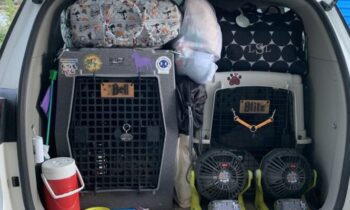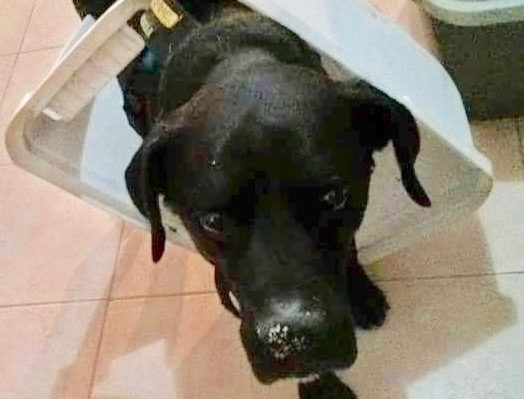
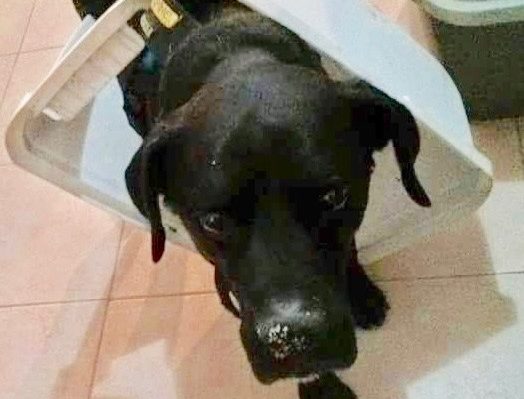
Cats and dogs. They can get along so well . . . or not. Even if they do get along, when cats and dogs live in the same household, the human members of the family may still have one problem caused by the combination of two species in their home: dogs like to eat what cats leave in litter boxes.
It’s gross, it’s unhygienic, it could be unhealthy and, what’s more—it’s gross.
Can dogs be deterred from raiding cat litter boxes to snack on kitty roca? I asked cat owners and cat professionals to chime in on how they keep dogs and litter boxes separate in their own homes and what methods they might recommend to friends and clients. Here are their suggestions.
Monique Feyrecilde Microchip-activated pet doors!
Zero training for the dog, a bit of training for the cat. Place the pet door in the interior door leading to the cat latrine area(s). I’m not saying let the cat outside! These doors can be used to split up interior parts of the home. This is also helpful if there are social issues and cats need to be kept to their own areas.
Baby gates often work. If the cat is older and has trouble jumping the gate (or the dogs are large enough), the baby gate can be raised six inches off the ground so the cat can go under but not the dogs.
The baby gates with a cat door aren’t so helpful, as the cat-door section is so large even a fifty-pound dog can squeeze through. However, the cat-door section can be made smaller using sliced pool noodles to line the interior of the cat-door square to help exclude dogs but allow the cat to pass through.
I have also used [microchip-activated pet doors] in cabinet doors. I place a Rubbermaid box with a hole cut in it within the cabinet.
I never recommend the use of “normal” litter boxes—just use large totes with a door hole. Keeps the mess contained. [For] cats who stand to pee, it catches and contains it, and [the bins] are cheap to replace.
Some people leave the lid on and cut a hole only in the lid, but I don’t like that option for cats as it requires them digging into the litter with their hind legs to leap out through the small hole.
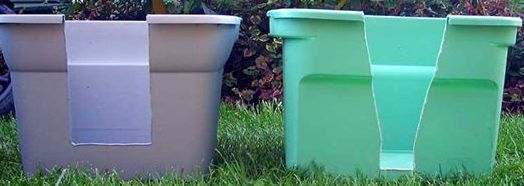
Julie Ellingson One of the more successful tricks I’ve heard about is putting the litter box inside a trunk or a Rubbermaid bin and cutting a hole for the cat to access.
My sister-in-law put in a cat flap to the laundry room.
I just use a baby gate for my crew, but I’m also a religious scooper.
I did once, for many years, have an automatically scooping box, which really does work. It did need cleaning now and then but was a good investment for me. It failed the diabetic cat test, though. That was too much for it.
Shelly Keel Put litter box into a dog crate with a cat door cut in the door so the dog can’t fit.
Tami Archilla Get a cat box that they enter from the top.
Laura Bourhenne A walk-thru baby gate with the little door in the bottom if you have bigger dogs, or a baby gate the cats can jump over but the dogs can’t.
Donna Furneaux I put the cat’s litter box in the laundry room. The door was left open but I built a gate whose spaces were big enough for the cat to slip through but not the dogs. The gate hung on hooks that I put on the door frame. Easy for me to lift off but not for the dogs to get through or dislodge.
Marcy Rauch I cut a “mouse hole” in my bathroom door. Big enough for the cats, too small for the dogs.
Eileen M. Gillan I put the litter box in a closet held nearly closed with a bungee cord. The cat could easily slip through, but the dog was too big. This put an immediate end to my dog showing up with cat-poop breath and litter stuck on her muzzle. (This would not work if your cat is bigger than your dog.)
Amy Shojai The Door Buddy is great!
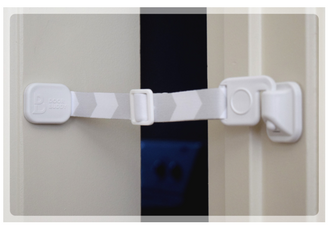
www.thedoorbuddy.com
Ettel Edshteyn I bought a two-level enclosed litter box because my six-pound dog could get into every other set-up.
Janice Langbehn It’s the greatest thing ever when you have two cats. Keeps the area clean. And food bowls go on top.

Whatever your issues may be with doggy litter-box raiding, a solution can be found. From high-tech microchip-activated pet doors in a variety of sizes (they work with your pet’s own microchip) to low-tech at-home “repurposing” of plastic totes into low-cost kitty bathrooms, there are answers to fit your budget and your lifestyle.
What solution will work best for you?

